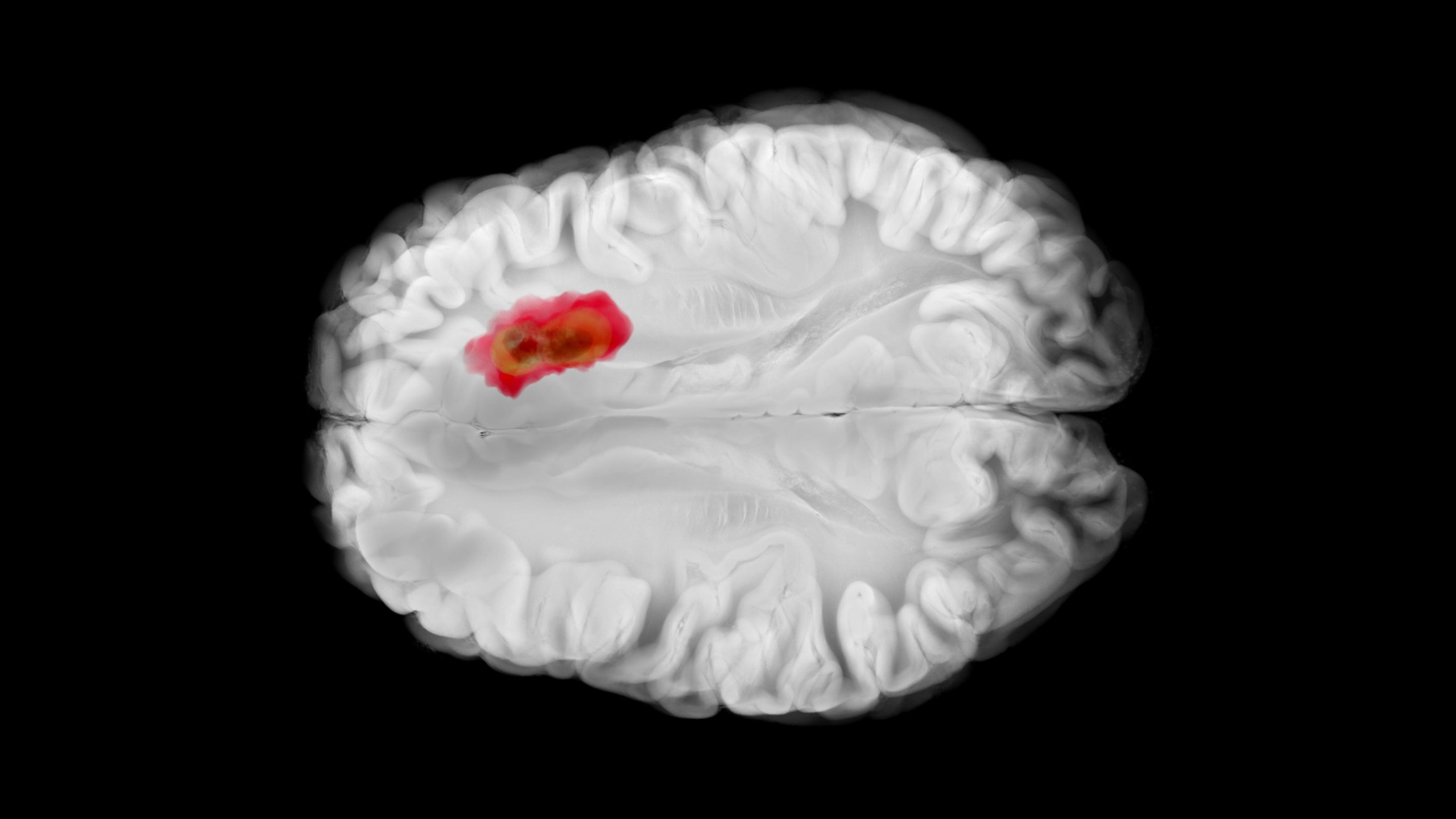Relapsing-remitting multiple sclerosis is characterized by the relapsing development of inflammatory lesions in the brain and spinal cord, leading to plaques with demyelination and axonal loss. It is assumed that the migration of lymphocytes across the blood-brain barrier is an important early step in the formation of lesions. This is where the class of selective adhesion molecule inhibitors comes in – with success.
For patients with multiple sclerosis (MS), rapid control of disease activity is an important therapeutic goal. When clinical exacerbations are frequent and/or radiologically evident disease activity is high, effective treatment is particularly important, as the inflammation associated with active disease can lead not only to demyelination but also to potentially irreversible neuronal damage. Disease-modifying therapies (DMTs) for the treatment of MS have been shown in pivotal trials to reduce relapse rates and disability progression over a period of 1 to 2 years. Some studies have also shown that DMTs have significant benefits in annualized relapse rates and/or gadolinium-enhancing lesion counts at 6 months compared to placebo, suggesting that the clinical effects of therapy may be detectable at earlier time points. In a Phase II study, the differences between natalizumab and placebo in MRI results reflecting inflammatory activity were evident after the first infusion and persisted over a six-month period, suggesting a rapid onset of action of natalizumab treatment. This benefit was later confirmed in a Phase III study and in clinical practice [1]. In the AFFIRM study, the antibody had a significant effect on the annualized relapse rate within three months of starting therapy, and the reduction was maintained over the controlled two-year study period. In combination with the MRI results of the Phase II study, these data suggest that natalizumab reduces disease activity shortly after the start of treatment. In addition, a significant effect on the cumulative probability of relapse was observed over a 2-year period, with a significant reduction observed as early as 8 weeks after the start of treatment. This rapid and sustained reduction in the annual relapse rate and risk of relapse occurred independently of baseline disease activity in the overall population and in the subgroup of patients with highly active disease [1].
Stopping disability progression for a long time
The rapid effect and ability to control disease in patients with highly active MS is best explained by the inhibition of leukocyte migration into brain tissue, which prevents the formation of lesions and reduces the recruitment of inflammatory cells into existing lesions. In addition to preventing leukocyte infiltration into the CNS, there is evidence that ongoing inflammation in the CNS can be dampened by disrupting interactions between inflammatory leukocytes and extracellular matrix proteins such as fibronectin and osteopontin or by inducing apoptosis of activated T cells [1].
A long-term study has now shown that even after 15 years of treatment, 82% of patients showed no disability progression [2].
An improvement in disability was even observed in 24%.
There were no new safety signals and the incidence of opportunistic infections, PML and malignancies was low
Versatility is the trump card
Another advantage lies in the versatile application possibilities of the immunomodulator [4,5]. In a study, the effects on the immunization reactions to a recall antigen (tetanus toxoid [TT]) and a neoantigen (keyhole limpet hemocyanin [KLH]) were investigated in patients with relapsing-remitting multiple sclerosis (MS) [5]. Patients received TT and KLH vaccinations either without natalizumab treatment (control) or after 6 months of natalizumab treatment (verum group). An adequate response to immunization was defined as an increase in specific serum immunoglobulin G (IgG) of at least twofold 28 days after the first immunization. All evaluable patients achieved protective levels of anti-TT IgG antibodies, and the proportion of responders to this recall antigen and to primary immunization with KLH was similar in the presence and absence of the drug. This suggests that treatment with the anti-a4 integrin antibody does not appear to affect responses to primary or secondary immunization in a clinically relevant way. Another cohort study comes to similar conclusions. Their results suggest that immunization with inactivated vaccines during therapy is both safe and immunogenic – regardless of the duration of treatment [4].
Noticeable improvements in everyday life
Fatigue is one of the main symptoms of multiple sclerosis (MS) and affects 54-95% of patients. It often occurs at the onset of the disease, persists throughout the course of the disease and has a negative impact on quality of life. To date, the pathophysiology is unknown, although imaging studies provide strong evidence that it may be caused centrally. Fatigue appears to be closely related to the extent of atrophy, to lesions predominantly localized in the frontal and parietotemporal white matter, and to functional changes in the prefrontal cortex, thalamus and basal ganglia [6]. In a single-arm clinical study with 195 MS patients, the antibody was analyzed under real-life conditions. A validated questionnaire, the Fatigue Scale for Motor and Cognitive functions (FSMC), was used both before and after 12 months of treatment to assess any change in patients’ perceived fatigue. In the treated cohort, all measured variables, i.e. fatigue score, quality of life, sleepiness, depression, cognition and disability progression, improved from baseline [6].
Real-world data on patient-reported outcomes (PROs) produced similarly positive results [7]. A total of 333 patients completed the 12-month study. After 12 months of treatment, 69-88% of patients reported a positive outcome (either an improvement or no further deterioration) on all PRO measures assessed. Significant improvements in overall and disease-specific HRQoL were observed after three infusions, on both physical and psychological measures, and were maintained after 12 infusions. The effects of multiple sclerosis on cognitive function and fatigue were significantly reduced [7].
Conclusion for practice
The humanized, recombinant, monoclonal antibody Natalizumab acts as an inhibitor of the alpha4 integrin. This inhibits the migration of leukocytes into sites of inflammation by inhibiting adhesion molecules (integrins). It exerts its effect predominantly in the CNS, is administered subcutaneously every four weeks in less than 15 minutes and can also be used in family planning after a strict risk-benefit assessment [8]. Study results both under controlled conditions and in everyday clinical practice confirm a high, rapid onset and long-lasting efficacy with proven safety.
Literature:
- Kappos L, et al.: Clinical effects of natalizumab on multiple sclerosis appear early in treatment course. J Neurol. 2013; 260(5): 1388–1395.
- Trojano, et al.: TYSABRI Observational Program: Long-term safety and effectiveness in relapsing-remitting multiple sclerosis over 15 years. EAN 2023.
- Butzkueven H, et al.: Long-term safety and effectiveness of natalizumab treatment in clinical practice: 10 years of real-world data from the Tysabri Observational Program (TOP), J Neurol Neurosurg Psychiatry. 2020 Jun; 91(6): 660–668.
- Carvajal R, et al.: Vaccine Safety and Immunogenicity in Patients With Multiple Sclerosis Treated With Natalizumab. JAMA Netw Open. 2024;7(4): e246345.
- Kaufman M, et al.: Natalizumab treatment shows no clinically meaningful effects on immunization responses in patients with relapsing-remitting multiple sclerosis. J Neurol Sci. 2014; 341(1–2): 22–27.
- Svenningson A, et al.: Natalizumab Treatment Reduces Fatigue in Multiple Sclerosis. Results from the TYNERGY Trial; A Study in the Real Life Setting. PLoS ONE. 2013; 8: e58643.
- Stephenson JJ, et al.: Impact of natalizumab on patient-reported outcomes in multiple sclerosis: a longitudinal study. Health Qual Life Outcomes. 2012; 10: 155.
- TYSABRI Information for healthcare professionals, status of information: December 2022 (s.c.).
InFo NEUROLOGIE PSYCHIATRIE 2024; 22(4): 28–29












